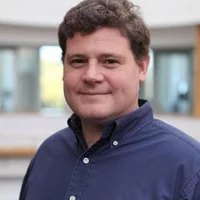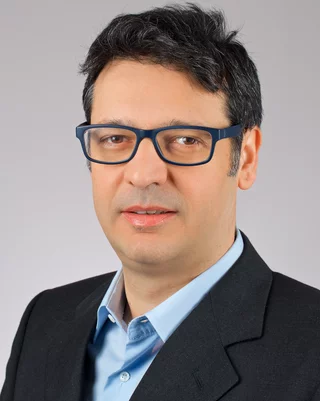Biography
Carlo Vicario is laser physicist in the Gun Laser Group (Laboratory of Nonlinear Optics) at the Paul Scherrer Institut. All of his degrees are from University of Rome “La Sapienza” and they include the MSc in Electronic Engineering (optoelectronics), and the PhD in Electrical Engineering. He carried out his postdoctoral research on ultrafast lasers for high-brightness electron accelerator and free electron laser at the Frascati Laboratory in Italy of the Instituto Nazionale di Fisica Nucleare. Here, he performed R&D on photocathode drive lasers including ultrafast pulse temporal shaping and femtosecond synchronization of seeding laser of high harmonic free electron laser. He also took part to research on wakefield particle acceleration and Compton scattering driven by 200 TW laser. Since 2009, Dr Vicario has joined the SwissFEL at the Paul Scherrer Institute as laser physicist in the laser group. Here, he explored nonlinear optics including high energy deep-UV pulse generation, transverse beam manipulation, ultrafast temporal pulse shaping and other key developments for high-brightness photo-electron beam generation. He also achieved a state-of-the-art high-field THz source and performed time-resolved nonlinear THz experiments ranging from ultrafast magnetism, superconductor and nonlinear optics. Carlo Vicario published more than 60 papers in peer-reviewed journal and submitted two European patents.
Institutional Responsibilities
Carlo Vicario currently supports the operation and the development of the photocathode and seeding lasers for SwissFEL. Moreover he acts as operative responsible for one of the gun laser group laser laboratory. He was the principal investigator for the SNF proposals "Ultrafast light modulator driven by strong and tunable THz field " and took part in several SNF projects.
Scientific Research
Carlo Vicario's research interests cover solid state laser, laser application to electron accelerator and Xray FEL, nonlinear optics and THz science. His scientific research is currently focused on laser developments for electron accelerator and seeded free electron laser. These researches include photocathode technology, gun laser and laser heater temporal manipulation as well as their effect on electron beam brightness and FEL performances. Recently his interest extended to laser systems for the realization and the diagnostics of enhanced coherence FEL and generation of ultrashort FEL pulse via laser seeding. In parallel, Carlo Vicario strongly contributed to the development of high-field and tunable narrowband THz source by optical rectification of infrared laser in several organic crystals. He conducted pump probe THz experiments on nonlinear electro-optical effect, magnetism, semiconductors and superconductors.
Selected Publications
For an extensive overview we kindly refer you to our publication repository DORA
Narrow-band and tunable intense terahertz pulses for mode-selective coherent phonon excitation, C. Vicario, A. Trisorio, S. Allenspach, C. Rüegg and F. Giorgianni Appl. Phys. Lett. 117, 101101 (2020). DOI: 10.1063/5.0015612 - Excitation of low-energy coherent phonons using light is emerging approach to study condensed-matter physics. The challenge of understanding the dynamics of low-energy modes calls for novel sources of strong narrow-band terahertz radiation that can be tuned to the individual phonon resonances. We demonstrate frequency-tunable narrow-band intense fields tunable between 0.5 and 6.5 THz by optical rectification of a temporally modulated near-infrared laser pumping a nonlinear organic crystal. This novel source allows the selective coherent excitation of adjacent vibrational modes, as demonstrated in single-crystal SrCu2(BO3)2. Our compact and scalable source has the potential to reveal the coupling of specific lattice vibrations with other degrees of freedom.
Impact of laser stacking and photocathode materials on microbunching stability in photoinjectors, S. Bettoni, M. C. Divall, R Ganter, M Pedrozzi, E Prat, S Reiche, T. Schietinger, A. Trisorio, C. Vicario, and V. Goryashko, Physical Review Accelerators and Beams 23 (2), 024401 (2020). DOI: 10.1103/PhysRevAccelBeams.23.024401 - Micro-bunching instability in electron accelerator is a collective effect that may severely spoil the beam quality and the free electron lasers (FEL) output. This instability originates at the source by density modulations of the photocathode laser and by shot-noise and it is amplified along the accelerator. We studied the micro-bunching instability using different photocathodes and demonstrate that a photoemitter with response time longer than 100 fs, such as Cs2Te, serves to damp the temporal structures originating from the photocathode laser. Cs2Te photocathodes may help to mitigate the micro-bunching instability.
Supercontinuum generation in OHQ-N2S organic crystal driven by intense terahertz fields, Flavio Giorgianni, Uros Puc, Mojca Jazbinsek, Tommaso Cea, Min-Jeong Koo, Jae-Hyun Han, O-Pil Kwon and Carlo Vicario, Optics Letters 44 (19), 4881-4884 (2019). DOI:10.1364/OL.44.004881 - Strong THz field can induce an ultrafast modification of the optical response of material and can be used as light modulator. We show that a laser supercontinuum is generated by cross-phase modulation with an intense terahertz (THz) field in OHQ-N2S. In this highly nonlinear organic crystal, the THz electric field induces a time-varying optical phase modulation, which causes a spectacular spectral broadening and shifting of a co-propagating near-infrared laser pulse. The effect is enabled by the large electro-optic coefficient, the low absorption, and the good velocity matching between the laser and the THz pulse over the OHQ-N2S crystal thickness. These results display a promising pathway for ultrafast control of the light using THz stimuli.
Leggett mode controlled by light pulses, F Giorgianni, T Cea, C Vicario, CP Hauri, WK Withanage, X Xi, L Benfatto, Nature Physics 15 (4), 341-346 (2019). DOI: 10.1038/s41567-018-0385-4 - Quantum systems that host multiple order parameters, e.g. multiband superconductors, attract great interest in both fundamental and applied physics. In these systems, in addition to collective modes associated with the individual order parameters, their mutual coupling can gives rise to additional excitations. A well-known example is the Leggett mode in superconductors, which corresponds to the relative phase fluctuation between two order parameters. We demonstrated for the first time that this mode can be manipulate and visualized in time-domain with an intense terahertz field. This result opens up new directions for the optical control of collective modes in quantum ground-states of superconductors.
High‐Efficiency and Low Distortion Photoacoustic Effect in 3D Graphene Sponge, F. Giorgianni, C. Vicario, M. Shalaby, L.D. Tenuzzo, A. Marcelli, T. Zhang, K. Zhao, Y. Chen, C. Hauri, S. Lupi, Advanced Functional Materials, 28 (2), 1702652 (2018). DOI:10.1002/adfm.201702652 - The conversion of light in sound plays a crucial role in spectroscopy, applied physics, and new technologies. We show light to sound conversion through a photo‐thermoacoustic mechanism in 3D graphene sponge. The unique combination of mechanical, optical, and thermodynamic properties of graphene sponge allows high efficiency conversion of light to sound from infrared to ultraviolet. A photothermal-based graphene sponge loudspeaker was demonstrated, providing a full digital operation at frequencies from acoustic to ultrasound. The present results suggest a new technology for the generation and control of sound potentially usable in a variety of new applications ranging from high‐fidelity loudspeaker, radiation detectors to medical devices. See also: international patent WO/2018/050372.
Intense, carrier frequency and bandwidth tunable quasi single-cycle pulses from an organic emitter covering the Terahertz frequency gap, C. Vicario, B. Monoszlai, M. Jazbinsek, S.-H Lee, O-P Kwon and C. P. Hauri, Scientific Report 5, 14394 (2015). DOI: 10.1038/srep14394 (2015) - In Terahertz (THz) science, one of the long-standing challenges has been the formation of single-cycle pulses with tunable spectrum across the frequency range known as THz gap: 0.1–15 THz. This frequency band hosts important molecular fingerprints and collective modes. We present a method that provides powerful single-cycle THz pulses in the THz gap whose duration can be continuously selected between 68 fs and 1.1 ps. The technique is based on optical rectification of a wavelength-tunable pump pulse in the organic emitter HMQ-TMS that allows for tuning of the spectral bandwidth from 1 to more than 7 octaves over the entire THz gap. These results expand the scope of spectrally dense THz sources to time-resolved nonlinear spectroscopy in the entire THz gap.


